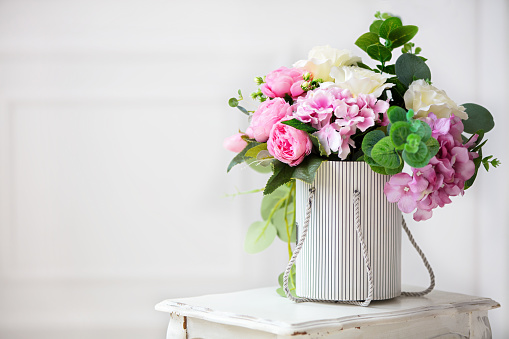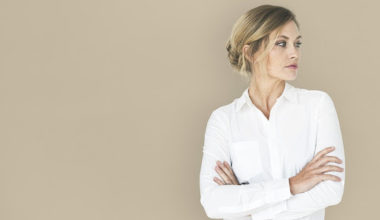The wedding bouquet is an assortment of flowers held by the lady of the hour as she walks down the aisle. It’s intended to be a correlative expansion to the general topic of the wedding and the style of her dress.
In any case, for what reason do brides convey flowers? Something beyond something to keep a lady of the hour’s hands busy when she walks down the aisle, the Wedding flower bouquet ties the entirety of a wedding’s design and stylistic layout together. It’s an accessory, a point of convergence, and one of the first peeks guests get into a festival. So in case, you’re a lady-to-be, choosing what you’ll convey as you advance toward the special raised area is in reality lovely significant.
Meet The Expert
Maxine Owens is a florist based in Texas and the author of Max Owens Design.
The assortment of flowers will contrast as will the size of the bouquet. There are some instances where the couple foregoes the practice through and through. Any place you land on the matter, there are regular questions that arise, similar to, all things considered, do I need to convey one? How should I manage the flowers after the wedding? Furthermore, where did the practice begin? Ahead we converse with wedding florist Maxine Owens to realize why brides convey flowers and the history behind the wedding bouquet custom.
The History and Meaning of the Bridal Bouquet
“The act of brides conveying bouquets dates to vestige,” Owens tells us. “Old Greeks and Romans, even Egyptians, conveyed fragrant herbs and spices to avert misfortune during weddings.” The flowers symbolized a fresh start and brought hopes of ripeness, happiness, and loyalty. “It wasn’t until the Victorian age that we see the introduction of the wedding bouquet as we probably are aware it today,” she says. “While flower symbolism was enormously well known then, at that point, and brides had the option to convey their heartfelt sentiments through their specific botanical choices, that training has blurred a little, with present-day couples choosing their flowers based more on magnificence and shading.”
Another central reason brides initially started conveying them centuries prior was because of the scent of the flowers, which masked their stench (you know, back when washing wasn’t such a regular event). Since today’s brides aren’t so worried about concealing an unpleasant smell, the bouquet’s fundamental purpose these days is to be an excellent accessory.
Wedding Bouquet FAQs
What kinds of flowers should I use?
This part can be overpowering, yet a great deal of the time the kinds of flowers you choose comes down to three things: personal inclination, the shading topic of your wedding, and the season it’s occurring. Here is a breakdown of the types that will in general be the most famous.
What style bouquet should I have?
“There are no ‘off-base’ bouquet styles,” Owens says. “Regardless of whether it’s customary, loose and natural, negligible, or even non-botanical, our recommendation is to choose what feels great and what reflects a couple.” When it comes to the size of the bouquet, she adds that it should be proportionate to the lady of the hour, “to ensure she isn’t swallowed by one excessively huge, or the effect is not there with something excessively small.”
Should it supplement my wedding dress?
Owens says the last design of the bouquet has a great deal to do with the design of the outfit. “A sleek, clean-lined outfit perhaps calls for a more negligible bouquet, so as not to overwhelm the dress,” she says. “Likewise, a bigger ball outfit could possibly deal with a bigger, more intricate bouquet.”
Regardless the style of the bouquet is, one thing to remember is balance in size, shading, and types of flowers used.
What amount does a wedding bouquet normally cost?
It commonly ranges somewhere in the range of $150-$350, yet that does exclude flowers for every other person in the wedding party. You can become familiar with those extra botanical costs here.
Who else at the party needs flowers?
In case you’re picking to equip everybody with flowers, it’s ordinary to have bouquets for your bridesmaids; a basket of petals, nosegay, or flower crown for your flower young lady; wrist corsages, nosegays, or botanical grip clips for female relatives (like mothers, grandmothers, and sisters); and boutonnieres for the man of the hour, groomsmen, ring bearers, ushers, and male relatives (like fathers, grandfathers, and brothers).
How would I separate between bouquets?
Most usually, brides select to have their ‘maids convey a slightly smaller version of their own bouquet, sometimes designating a specific flower to show up in the wedding bouquet as it were. You could also choose an assortment of blooms for your own bouquet and afterward have every bridesmaid convey a single blossom or a couple of stems of a single assortment. Another extraordinary choice is to play with shading, either adding an extra tone to your bouquet or having one be very brilliant while the other is more muffled.
Do I need to toss my bouquet?
No. In the wake of placing all that work into designing the ideal photograph commendable bouquet, the possibility of tossing it over your head can be absolutely appalling. Also, numerous female wedding guests have expressed intense aversion to the whole act of the bouquet toss, so you might need to save them the trial. In the event that you do choose to do a bouquet toss, either ask your florist to make a smaller (and less expensive) nosegay for you to toss, or snatch one of the bridesmaids bouquets. The smaller style will be a lot easier to toss, and less dangerous for those attempting to get it.
How should I manage it after the wedding?
In case you’re joined to your bouquet, investigate options for having it preserved. You can press a couple of the blooms in a book, dry the flowers and spot them in a shadow box, or have a professional preserve it for you. Otherwise, stick the stems in a vase, and fly by your nearby florist for a beautiful bouquet of flowers to add at regular intervals to keep the flowers alive as long as possible. Then, at that point, relish in the pictures from your photographic artist.
Wedding Bouquet Alternatives
“Only one out of every odd lady of the hour chooses a conventional round bouquet, and that is OK because there are lots of other similarly rich options,” Owens says. “Asymmetric shapes, smaller bouquets resembling posies, cascading designs, are altogether wonderful and suitable. The elements used can go a long ways past basic roses and peonies. Tropicals, dried flower elements, and interesting shading combinations make remarkable bouquet statements.”
Assuming you need to resist the established norm much further, you can pick to hold a single blossom, advance down the aisle with your dog on a leash, or leave your hands unfilled so you can get your parents for that significant walk. Owens adds, “Lanterns, botanical wreaths, paper flowers, wearable live botanical pieces, similar to statement necklaces and sensational headpieces, could be fun options for the lady wanting to skip the conventional bouquet out and out.”











